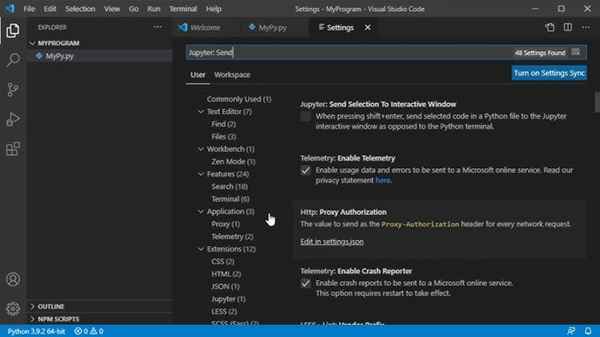In the dynamic realm of web development, encountering and resolving issues is par for the course. One such challenge that often perplexes developers working with Jupyter Notebooks is the elusive “Xsrf’ Argument Missing from POST” dilemma. This article delves deep into the intricacies of this problem, providing a comprehensive guide on how to navigate and conquer it efficiently.
Unraveling the Mystery

What is the “Xsrf’ Argument Missing from POST” Error?
At the heart of the matter lies the enigmatic “Xsrf’ Argument Missing from POST” error, a common stumbling block faced by developers utilizing Jupyter Notebooks. This error typically manifests when there is a lapse in including the Cross-Site Request Forgery (CSRF) protection mechanism in a POST request. Without this essential “Xsrf” argument, the request lacks a crucial layer of security, leaving the application vulnerable to potential attacks.
Navigating the Solutions
1. Understanding the Importance of CSRF Protection
Before diving into solutions, it’s imperative to comprehend why CSRF protection is paramount. CSRF attacks exploit the trust that a site has in a user’s browser, making it essential to validate and authenticate requests. Incorporating the “Xsrf” argument fortifies your Jupyter Notebook against malicious exploits.
2. Checking Environment Configuration
A recurring cause of the “Xsrf’ Argument Missing from POST” error is a misconfiguration in the Jupyter Notebook environment. Begin troubleshooting by verifying the configuration settings, ensuring that the CSRF protection mechanism is enabled.
3. Updating Jupyter Notebooks
Outdated software can often be a breeding ground for errors. Ensure that your Jupyter Notebook installation is up to date. Developers frequently release patches and updates that address security vulnerabilities, including those related to CSRF protection.
4. Explicitly Specifying “Xsrf” in POST Requests
In some cases, the “Xsrf” argument may not be automatically included in POST requests. To counter this, explicitly specify the “Xsrf” argument when crafting your requests. This ensures that the CSRF protection is consistently applied.
Real-World Applications

5. Case Studies: Conquering “Xsrf’ Argument Missing from POST”
Learning from real-world scenarios can be invaluable. Explore case studies where developers successfully navigated and resolved the “Xsrf’ Argument Missing from POST” error. Understanding their methodologies provides practical insights into tackling this issue head-on.
Pro Tips and Best Practices
6. Best Practices for CSRF Protection in Jupyter Notebooks
Prevention is the best cure. Explore advanced tips and best practices for implementing robust CSRF protection in your Jupyter Notebooks. From token rotation strategies to secure cookie usage, arming yourself with these practices fortifies your application against potential vulnerabilities.
Frequently Asked Questions (FAQs)
Q1: What is CSRF protection, and why is it crucial in Jupyter Notebooks?
A1: CSRF protection, or Cross-Site Request Forgery protection, is a security measure that safeguards against malicious attacks by validating and authenticating requests. In Jupyter Notebooks, it is crucial to prevent vulnerabilities, ensuring the integrity of your application.
Q2: How can I check if the “Xsrf” argument is missing from my POST requests?
A2: To check for the “Xsrf” argument in POST requests, inspect the request headers. If the “Xsrf” argument is absent, it indicates a potential vulnerability. Ensure that your environment configuration includes CSRF protection.
Q3: Why is updating Jupyter Notebooks important in resolving this error?
A3: Updating Jupyter Notebooks is essential as developers regularly release patches addressing security vulnerabilities. Keeping your installation up to date ensures you benefit from the latest security enhancements, reducing the risk of “Xsrf’ Argument Missing from POST” errors.
Q4: Can you provide examples of explicit “Xsrf” specification in POST requests?
A4: Certainly! When crafting POST requests, include the “Xsrf” argument explicitly. For instance, POST /endpoint HTTP/1.1 with headers: {“_Xsrf”: “your_token”} ensures consistent application of CSRF protection.
Conclusion
In conclusion, conquering the “Xsrf’ Argument Missing from POST” error in Jupyter Notebooks demands a nuanced understanding of CSRF protection and meticulous attention to detail. By comprehending the underlying causes and implementing the outlined solutions, developers can safeguard their applications against this common pitfall. Remember, a proactive approach to security is the cornerstone of resilient web development.
Read also:
- Malicious npm Packages Found Exfiltrating Sensitive Data from Developers
- Steam Achievement Manager: How To Download & Use It in 2023
- WS-117178-5 PS5 Error Code: How to Fix it
- Error Retrieving Data Center in Halo Infinite: 5 Ways to Fix It
- What Is Error Code 51003 in Death Stranding? How do I Fix It
- Free Hogwarts Legacy Redeem Codes: Are They Real?
- Vex 5 Unblocked

![Xsrf’ Argument Missing from POST [Jupyter Notebook]](https://www.techlectual.com/wp-content/uploads/2023/12/Xsrf-Argument-Missing-from-POST-Jupyter-Notebook-930x450.jpg)

